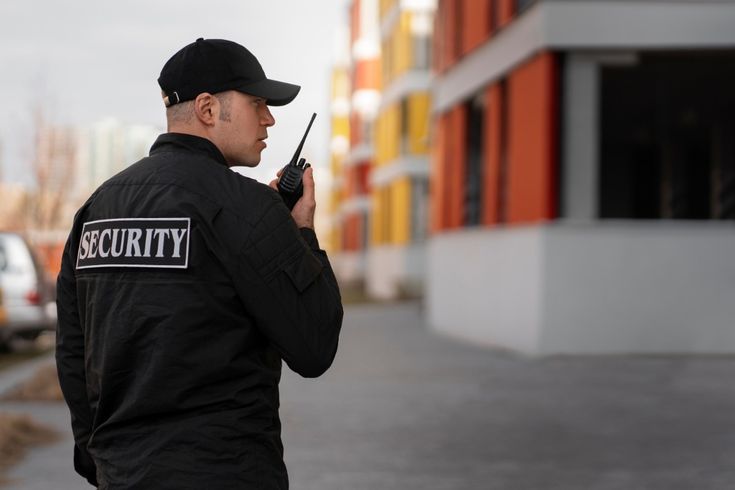How Security Blogs Help You Make Smarter Safety Decisions
When it comes to protecting your home, business, or any valuable space, the decisions you make around security have long-term impact. And in a world where threats come from both physical intrusions and digital vulnerabilities, it’s no longer enough to rely on outdated strategies or guesswork.
Most people looking to strengthen their security start with research. Whether they’re exploring tools, comparing services, or reading about real incidents, the goal is the same—to gather reliable information before investing. This is where well-written, current, and practical security blogs can provide clarity. These resources break down technical ideas, offer fresh perspectives, and help guide everyday readers toward better solutions.
The Real Value of Security Blogs in Planning Protection
In today’s market, there’s no shortage of alarms, cameras, sensors, and access systems. The bigger question is: what combination works best for your environment? Generic answers don’t help much, and aggressive sales pitches can cloud judgment.
That’s why online resources that focus on education—rather than just advertising—are worth seeking out. In the right blog, you’ll find breakdowns of system types, comparisons of service models, explanations of new technology, and thoughtful responses to real-world questions.
Instead of overwhelming you with jargon, the best blogs make security feel approachable. They explain why some systems are better suited to homes than offices, or how lighting placement can affect camera performance. In doing so, they empower readers to make informed, confident choices.
Start by Understanding What You Actually Need
Before considering devices or service providers, step back and identify the risks you want to reduce. A few key questions to ask yourself include:
What’s at stake if an incident happens?
Where are the weak spots in my space?
Who comes and goes throughout the day?
Do I need to monitor continuously or only during off-hours?
When you clarify your situation, you’ll avoid overbuying or choosing the wrong setup. For example, a small office might need remote door control and staff training more than advanced surveillance. A warehouse, on the other hand, could benefit from perimeter sensors, motion alerts, and live video feeds.
Environment Matters More Than Equipment
It’s tempting to focus on the newest devices, but even the best hardware won’t deliver results if it doesn’t suit your environment. Consider the space you’re securing:
Large open areas may require wide-angle cameras
High-traffic zones could benefit from smart access control
Outdoor storage areas may need weatherproof motion detectors
These choices aren’t about spending more—they’re about spending smarter. When your tools match your physical layout and typical usage, they work better, cost less over time, and deliver real peace of mind.
Why You Should Ask the Right Questions First
Whether you're working with a service provider or planning your own setup, asking the right questions can dramatically improve the outcome. Some examples include:
How long is the response time for alerts?
What happens during a power outage or signal failure?
Can I view activity from my phone while away?
Are system upgrades or expansions possible later?
These aren’t just technical questions—they reveal how useful and adaptable a system will be when it really matters. And when these topics are discussed in expert articles, readers can prepare themselves before making a final decision.
Learn from What Others Have Already Experienced
One of the best ways to improve your safety strategy is to study what others have done—successes and failures alike. Many online articles and case studies provide examples of common pitfalls:
Poorly placed cameras that miss important activity
Cheap equipment that breaks down too quickly
Inadequate lighting that renders video footage useless
Delays in emergency response due to flawed system design
By learning from these scenarios, you can spot red flags early and avoid preventable problems.
Combine Technology with Human Awareness
Even the most advanced security system still relies on human action. Someone has to install it correctly, respond to alerts, monitor performance, and adjust settings as conditions change.
A complete protection plan includes:
Easy-to-understand protocols
Training for staff or household members
Clear signage to deter unwanted behavior
Communication plans in case of emergencies
When people understand how systems work and what their role is, everything runs more smoothly. It also reduces panic and confusion during urgent situations.
Flexibility Should Be a Key Feature
Your needs today might not match your needs six months from now. Maybe your team expands. Maybe your business grows. Or maybe you simply discover new vulnerabilities after an incident occurs.
That’s why any system you choose should be flexible. You want something that can be scaled, updated, or integrated with other tools without needing a complete restart. Great guidance from online articles often includes insight on future-proofing your setup—so you don’t get locked into something rigid or outdated.
What to Look for in the Content You Read
Not every article online is worth your time. When browsing informational resources, focus on these signs of quality:
The content is up to date
It’s written or reviewed by professionals
It avoids excessive sales language
It focuses on real-world situations, not just product specs
It explains pros and cons clearly and fairly
These qualities show that the goal is to help you learn, not just to sell a product. When you find resources like that, you can trust the advice and apply it to your own planning.
Small Steps Make a Big Difference
You don’t need to completely overhaul your setup overnight. Start with simple actions like improving visibility, setting up basic motion alerts, or organizing emergency contact lists. Each improvement adds a layer of safety.
And as you continue to learn and refine your setup, you’ll gain confidence—and better results. It’s not about perfection. It’s about awareness, preparation, and smart adjustments over time.
Final Thoughts
Making the right decisions about protection is easier when you have clear, helpful information to guide you. From understanding basic system features to exploring advanced safety options, the journey starts with knowledge.
If you want that knowledge to come from people who’ve worked in the field, solved real problems, and explained complex topics simply, then reading trustworthy security blogs can offer you exactly that—practical advice without pressure.








